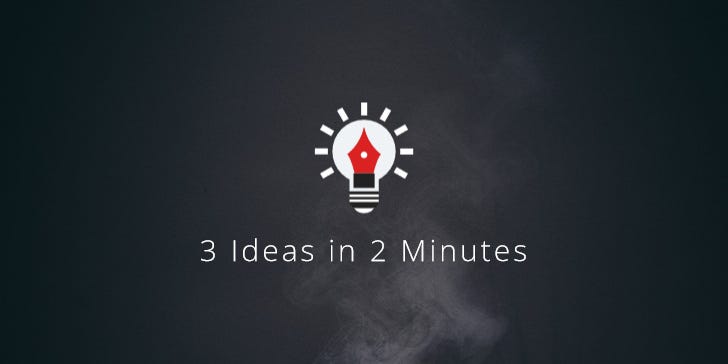#222: Reverse Benchmarking, Value of Uselessness & Signalling Through Inefficiency
3 Ideas in 2 Minutes on Marketing Secrets
I. Reverse Benchmarking
One of my favourite restaurants in Melbourne, Australia, is an old corner pub turned fancy dining place. We love the food and the service. But you could get that at many other places in Melbourne. What makes the place stand out is their rum cart.
It may have been the product of Reverse Benchmarking. The concept, as explained by marketing contrarian Rory Sutherland, is the practice of looking at your competition for inspiration. Not by copying what they do well. (Nobody would even notice that.) But by catching what they do badly and then deliberately inverting those mistakes. You ask: “What do others consistently get wrong that we could do differently?”
Rory gives the example of top-tier restaurants serving excellent food but cutting corners on coffee and treating beer drinkers like “second-class citizens to the wine drinkers”. A restaurateur took advantage by introducing coffee and beer sommeliers. He strived to provide the guests with the best coffee and beer experience they’ve ever had in a restaurant, taking his food temple from no. 50 in the world to no. 1.
Now, I’ve never bothered with the afterthought of a post-dinner drinks menu at restaurants. But I always look forward to the Recreation Bistro’s rum cart being rolled to our table after dinner. Brimming with a treasure trove of rums from all over the world, and brought to life by an expert waitress.
II. Value of Uselessness
If you now think your business needs an equally brilliant stand-out feature to be successful, you may underestimate the Value of Uselessness. Think of a product with a feature that serves no practical purpose, yet adds value and desirability through symbolism, identity or delight.
The Supreme Clay Brick Red sold by the clothing brand Supreme is an extreme example. A plain building block transformed into a coveted collectible merely by bearing the Supreme logo. Its uselessness is its main feature.
Then there’s Tesla’s Fart Mode, an example of the playful side of the principle. While it has no function for driving, our car’s capability for farting reliably amuses my son, who then shows it to his friends. Pressed by their tech-savvy offspring, their parents then go buy a “fart car” themselves. Maybe.
Unfortunately (or luckily), uselessness only works on a foundation of substance. Quirky features or collectibles resonate because the product or brand already delivers.
III. Signalling Through Inefficiency
The other day, I got a strange letter in the mail. The envelope had no sender address and was handwritten. In the envelope, I found a postcard with a picture of what appeared to be a group of friends on a weekend trip. Lovely people, I’m sure. I just had no idea who they were. Until I read the handwritten note. I still had no idea who those blokes were. But they thanked me for buying their whey protein powder.
It was an example of Signalling Through Inefficiency. I’ve written about signalling theory before, the idea of sending credible messages through actions that are costly or hard to fake. And sometimes wasting resources (time, money or stationery) makes a product more desirable because it signals abundance, care or exclusivity.
In the case of my protein-thank-you-note, it signalled: “We care deeply. This is not scalable, we know. But that’s the point. We’re just a bunch of startup boys making protein power, and we’re genuinely thankful.” Something like that. On one level, it worked on me. But I won’t buy again. Unfortunately, their vanilla-flavoured protein tasted like someone had coughed “vanilla” into a pile of chalk. Sorry boys. 🐘
Have a great week,
Chris
themindcollection.com

